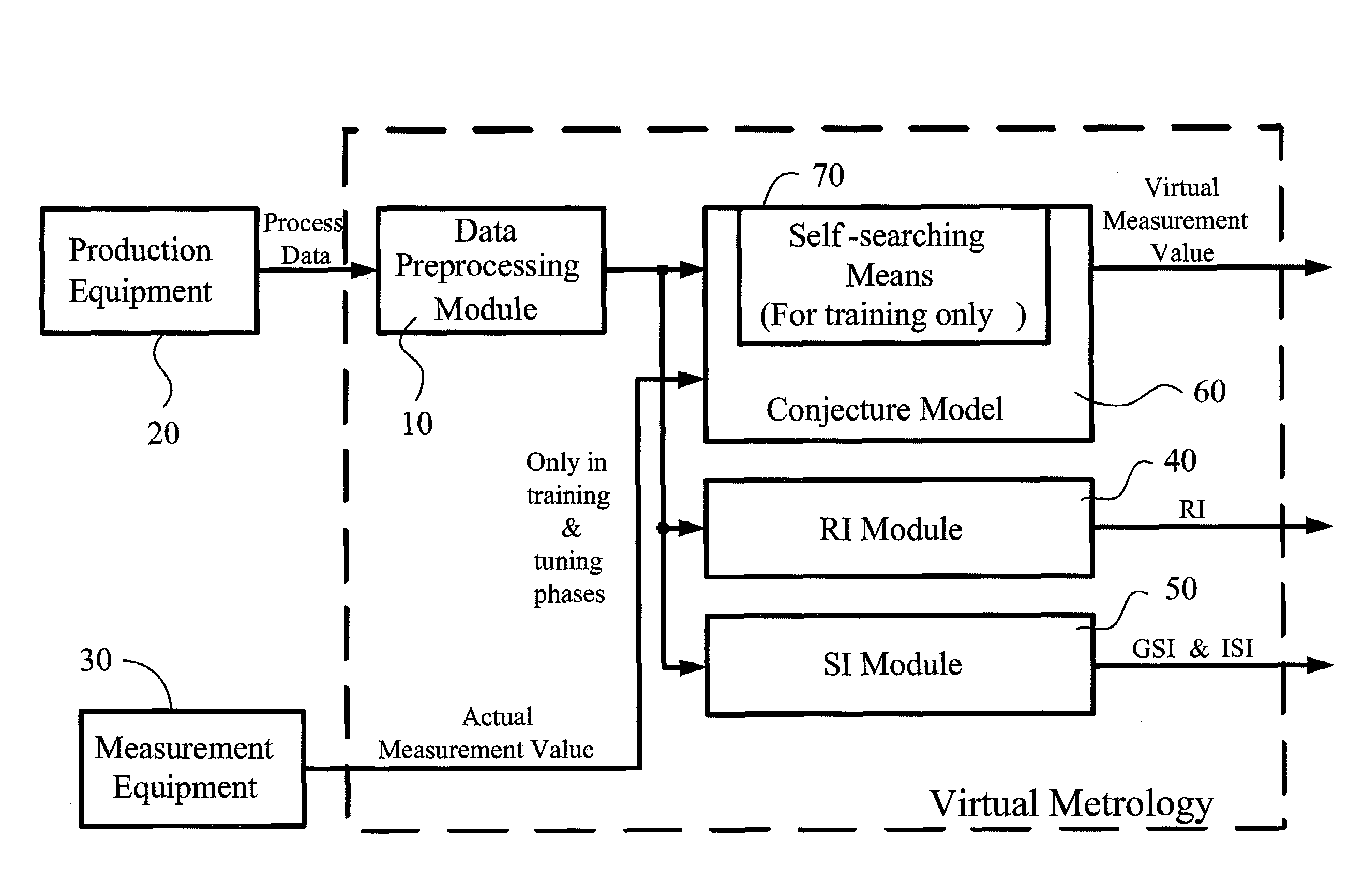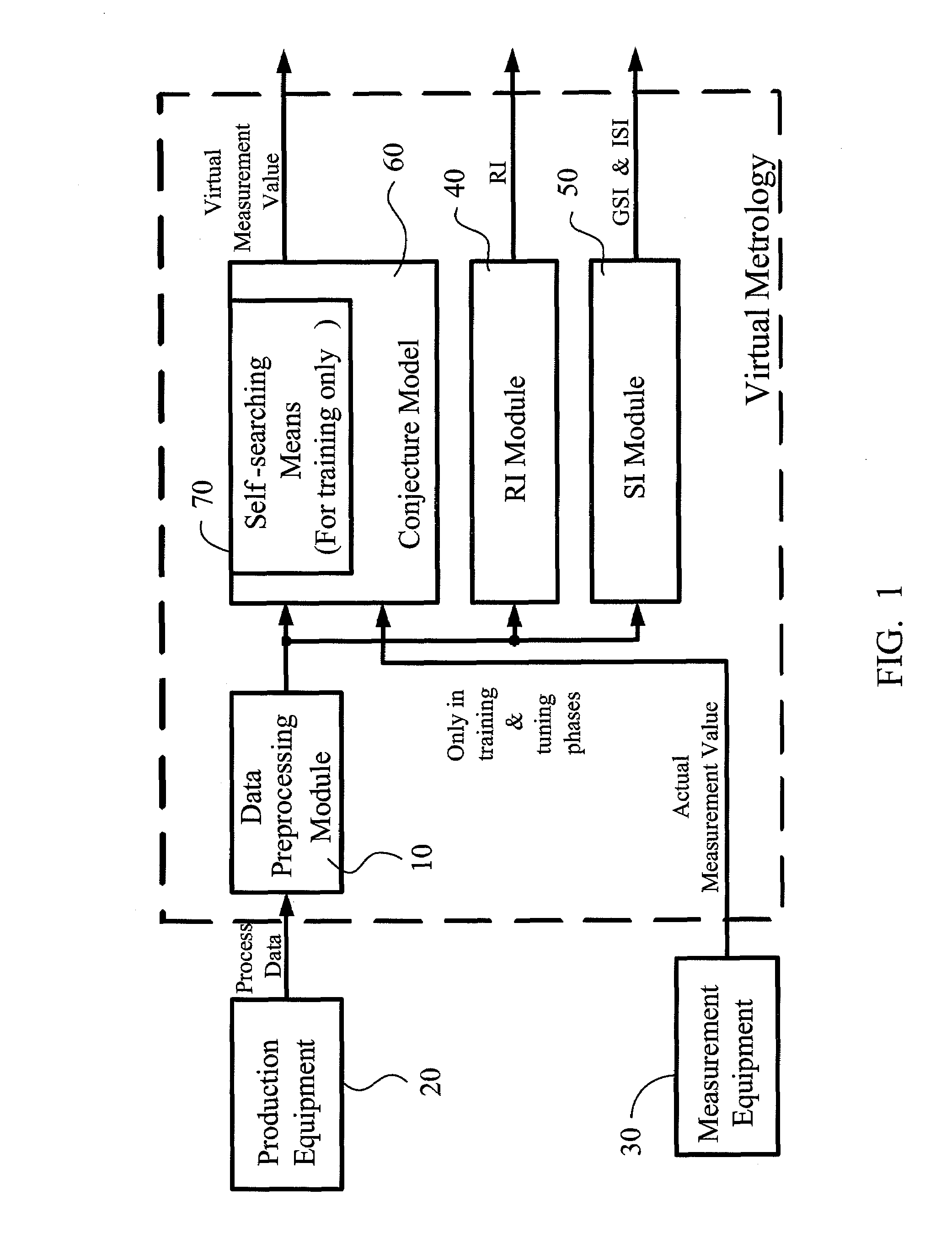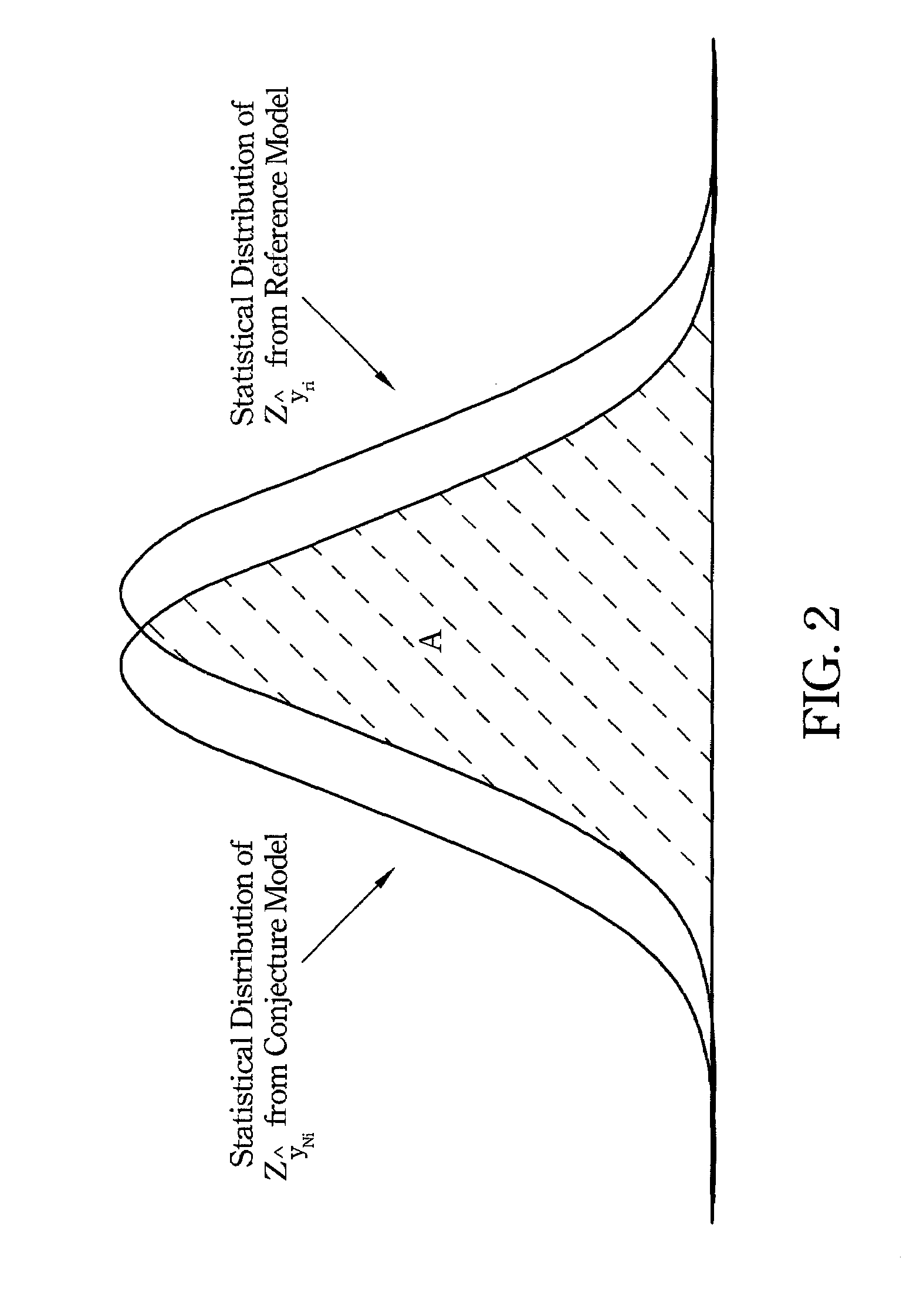Method for Evaluating Reliance Level of a Virtual Metrology System
- Summary
- Abstract
- Description
- Claims
- Application Information
AI Technical Summary
Benefits of technology
Problems solved by technology
Method used
Image
Examples
Embodiment Construction
[0030]Reference will now be made in detail to the preferred embodiments of the present invention, examples of which are illustrated in the accompanying drawings. Wherever possible, the same reference numbers are used in the drawings and the description to refer to the same or like parts.
[0031]Referring to FIG. 1, FIG. 1 is a schematic block diagram showing a virtual metrology system according to a preferred embodiment of the present invention. In the virtual metrology system of the present invention, a data preprocessing module 10 processes and standardizes raw process data from a piece of production equipment 20, and sifts important parameters from all of the original parameters to prevent unimportant parameters from affecting the prediction accuracy. A conjecture model 60 uses a set of process data after preprocess to conjecture the virtual measurement value of a product being manufactured. The conjecture algorithm applicable to the conjecture model 60 can be such as a multi-regre...
PUM
 Login to View More
Login to View More Abstract
Description
Claims
Application Information
 Login to View More
Login to View More - R&D
- Intellectual Property
- Life Sciences
- Materials
- Tech Scout
- Unparalleled Data Quality
- Higher Quality Content
- 60% Fewer Hallucinations
Browse by: Latest US Patents, China's latest patents, Technical Efficacy Thesaurus, Application Domain, Technology Topic, Popular Technical Reports.
© 2025 PatSnap. All rights reserved.Legal|Privacy policy|Modern Slavery Act Transparency Statement|Sitemap|About US| Contact US: help@patsnap.com



